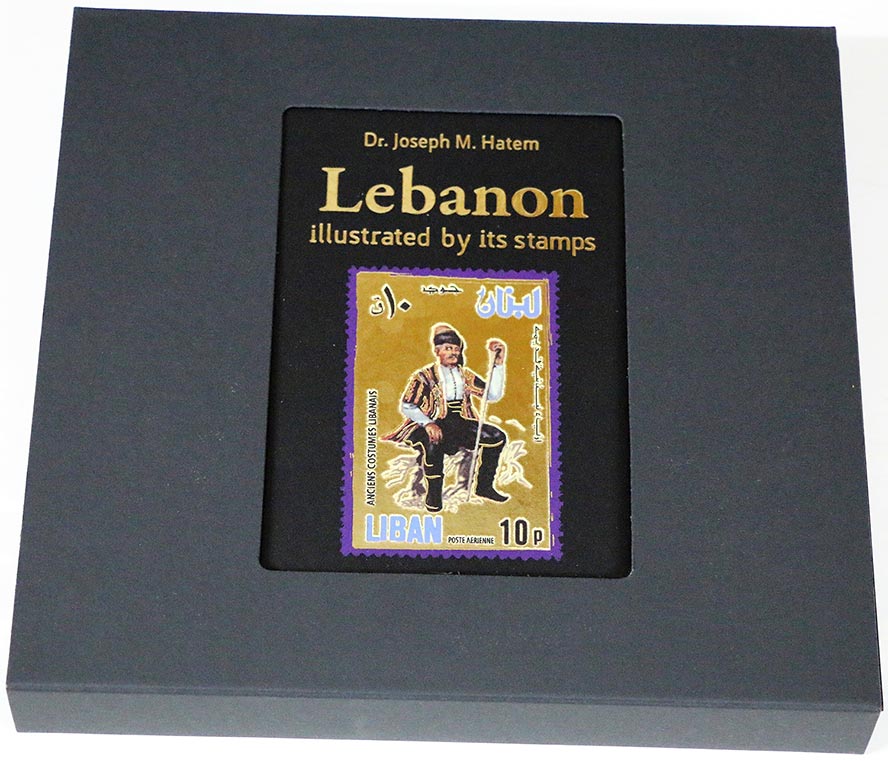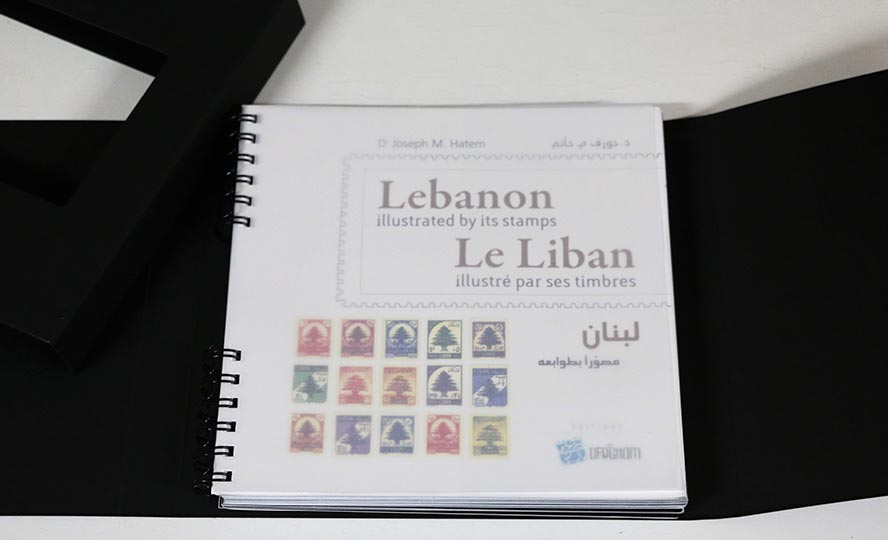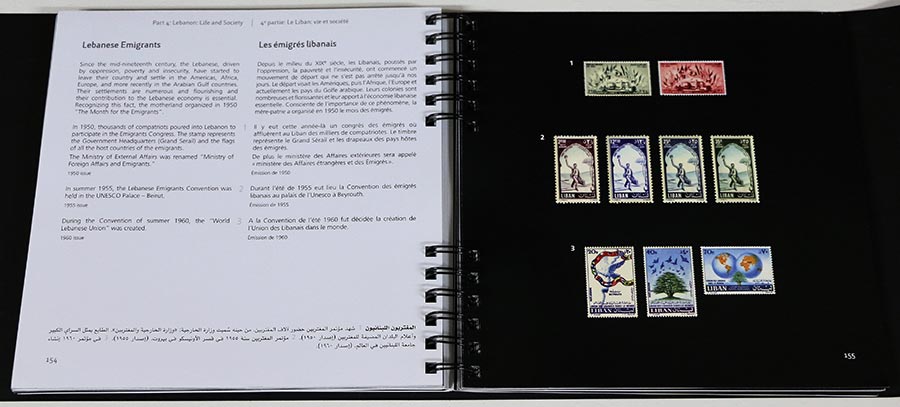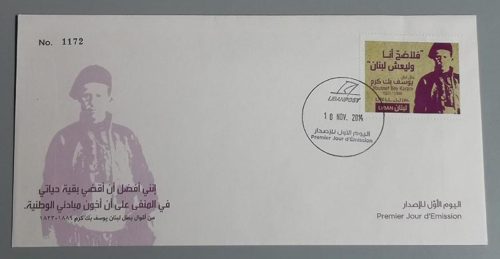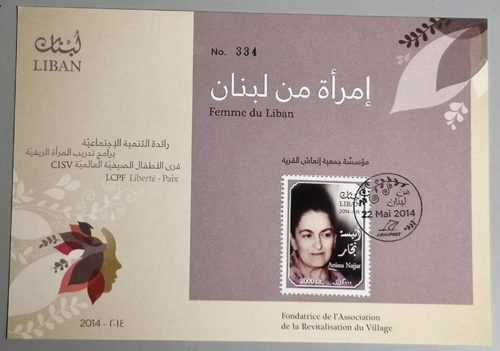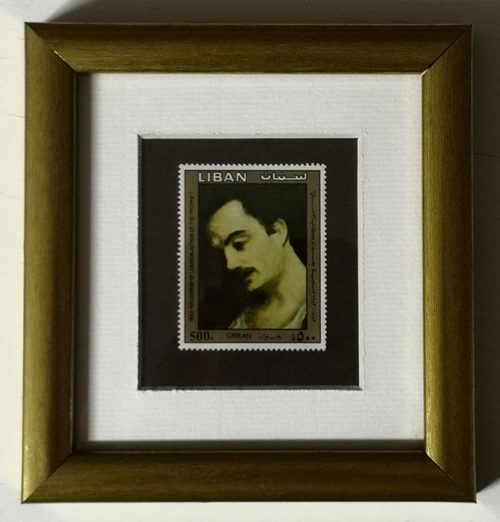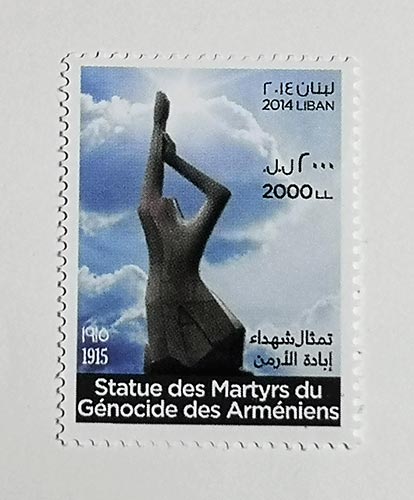Lebanon illustrated by its stamps – لبنان مصورا بطوابعه – Le Liban illustré par ses timbres” 23.5 x 24.5 x 3 cm, 220 pages in three languages English, French, and Arabic by Dr. Joseph Hatem.
Lebanon illustrated by its stamps
$55.00
Description
Lebanon Postcard presents the book “Lebanon illustrated by its stamps – لبنان مصورا بطوابعه – Le Liban illustré par ses timbres” 23.5 x 24.5 x 3 cm, 220 pages in three languages English, French, and Arabic by Dr. Joseph Hatem.
Foreword
Invented by Rowland Hill, the first postage stamp was issued in London on May 6th, 1840. It represented the profile of Queen Victoria at the age of twenty.
The stamps spread gradually all over the world. Switzerland and Brazil adopted it in 1843 and France followed in 1849.
The first Lebanese stamps date back to 1924 and were designed and printed in France. Philippe Mourani, a well-known painter, was the first Lebanese, in 1936, to design the stamps of Lebanon. In 1942, Paul Koroleff, a Russian artist who settled in Beirut took over until 1965, but other artists were also approached such as the Lebanese painter Mustafa Farroukh. Beginning of 1942, the stamps were printed in Lebanon at the “Imprimerie Catholique”, then after 1953 other printing presses took over. Until 1966, the name of the artist and the printer figured on the bottom of the stamp: this was called the “signature”.
The Council of ministers reserves the right to issue a new stamp and delegates the minister of Communication to carry out the project. Three types of stamps were used for sending mail: surface mail, airmail, and tax stamps. The last one was discontinued in 1965 and the airmail in 1982.
The Post office issues also other items such as the non-perforated stamps, souvenirs sheets and “first day of issue” envelopes. All of these are not intended for stamping the mail.
On the other hand, fiscal and professional stamps (such as for the Order of Physicians…) are not included in the Lebanese philately.
Finally, during the periods of instability from 1975 to 1992, the Post office was unable to issue new postage stamps so it resorted then to ink stamps.
The main categories of the book:
– Modern Lebanon, Historical Milestones
The Emirate, The Moutassarifia etc… The victims of injustice…
– Lebanon in its Arab and International Context
– Lebanon’s Heritage
The Cedar, Lebanon’s glory, World Cultural Heritage, Architectural Heritage etc… Lebanese Celebrities, Lebanese Painters etc…
– Lebanon: Life and Society
Lebanese Emigrants, Baalbek International Festival etc… International Rotary Club…
– Lebanon: Open to the World
Paris International Fair, 1937, Mother and Child etc…
Additional information
| Weight | 1.3 kg |
|---|---|
| Dimensions | 1 × 1 × 1 cm |


